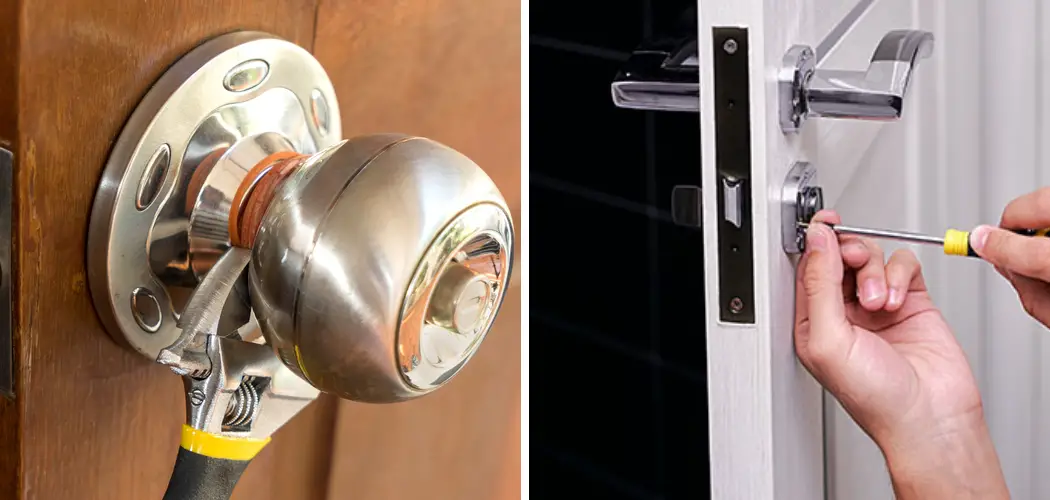Dealing with a broken lock can be a frustrating and potentially compromising situation, whether it’s on a door, window, or any other entry point. However, knowing how to address this issue effectively is essential for maintaining security and peace of mind.
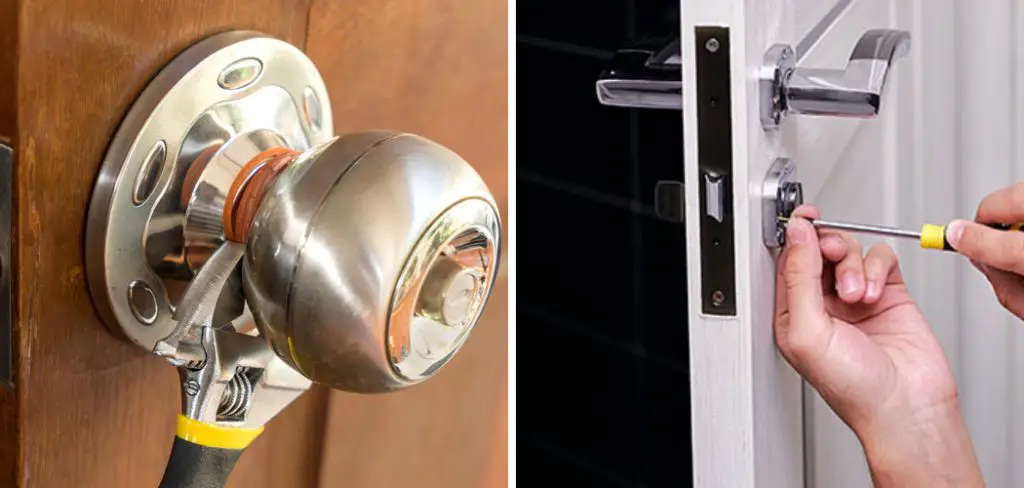
In this guide, we’ll explore various methods and techniques for how to fix a broken lock, ranging from simple DIY solutions to more advanced repairs. Understanding the underlying causes of lock malfunctions, such as jammed tumblers, worn-out components, or misaligned mechanisms, is crucial for determining the appropriate course of action.
Whether you’re a homeowner, renter, or business owner, having the skills to troubleshoot and rectify a broken lock can save you time, money, and inconvenience. So, let’s delve into the steps and strategies involved in restoring functionality to a broken lock and regaining control over your property’s security.
The Importance of Functioning Locks
Functioning locks are the keystone of property security and personal safety. They not only safeguard against unauthorized access but also serve as a fundamental barrier, protecting inhabitants and belongings from potential threats. In settings ranging from residential to commercial, the integrity of locks is imperative for ensuring peace of mind.

A secure lock system acts as a deterrent to intruders, thereby minimizing the risk of burglary and vandalism. Beyond security, functioning locks are crucial for privacy, allowing individuals and businesses to control access to their spaces. In essence, the reliability of locks underpins the overall sense of security and privacy, which are essential components of a safe and comfortable living or working environment.
Common Issues That Can Cause a Lock to Break or Malfunction
Several factors can contribute to a lock becoming broken or malfunctioning. Understanding these common issues is the first step towards effective troubleshooting and repair:
- Wear and Tear: Over time, locks can suffer from wear and tear due to repeated use. This can lead to internal components becoming worn or misaligned, causing the lock to malfunction.
- Dirt and Debris: Accumulation of dirt, dust, and other debris inside the lock mechanism can hinder its operation. This is especially common in outdoor locks exposed to the elements.
- Improper Installation: If a lock has not been installed correctly, it may not function as intended. This can include issues such as misaligned latch bolts or improperly sized components for the door or frame.
- Temperature Fluctuations: Extreme temperature changes can cause door materials to expand or contract, which in turn can affect the alignment of the lock and its components.
- Forced Entry Attempts: Any attempts at forced entry, such as using brute force or lock picking tools, can damage the lock mechanism. This includes bending of the lock cylinder, breaking of internal components, or jamming of the lock pins.
- Faulty or Low-Quality Locks: Not all locks are created equal. Locks of inferior quality may be more prone to malfunctioning due to substandard materials or manufacturing defects.
- Key Problems: Damaged, bent, or worn keys can also cause issues by not engaging the lock tumblers correctly. Similarly, using the wrong key can damage both the key and the lock.
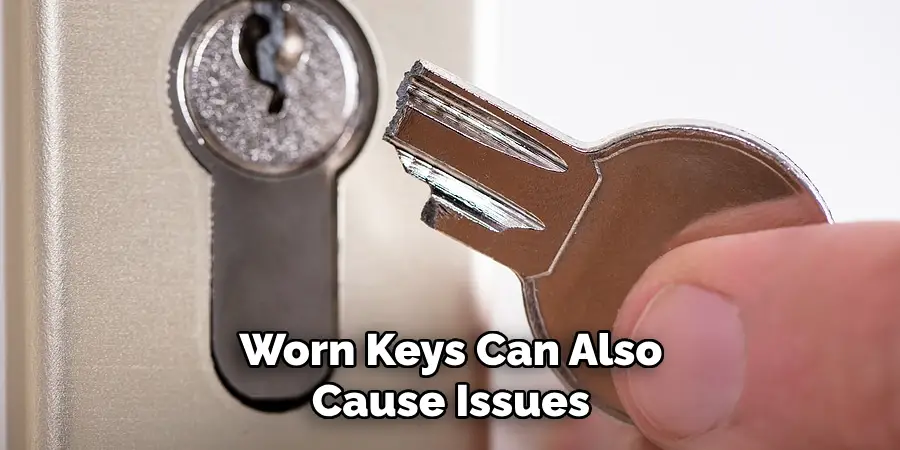
Addressing these common issues promptly can help restore the functionality of a broken or malfunctioning lock, ensuring the security and integrity of your property.
Understanding the Types of Locks
Before attempting to fix a broken lock, it’s crucial to understand the different types of locks and their specific mechanisms. Recognizing the type of lock you’re dealing with will guide you in applying the correct repair techniques. Here are some of the most common types of locks:
- Cylinder Locks: These are the most common types of locks found on residential doors. They operate with a key turning a cylinder to move the bolt that locks or unlocks the door.
- Deadbolts: Offering higher security than simple cylinder locks, deadbolts require a key to move the bolt into the door frame, making the door more resistant to forced entry.
- Padlocks: These are detachable locks with a shackle that may be passed through an opening to prevent use, theft, vandalism, or harm. Padlocks come in various sizes and security levels and are known for their portability.
- Lever Handle Locks: Often found on internal doors, especially in commercial settings. The lever must be pushed down or up to operate the bolt.
- Electronic Locks: These locks use an electrical mechanism to operate the lock. They can be opened with a keypad, fingerprint, or a smart access card, providing a keyless solution.
- Smart Locks: An advanced form of electronic locks, smart locks offer remote control features, often via a smartphone app, allowing users to lock or unlock doors remotely and monitor who enters or leaves.
- Mortise Locks: Common in commercial spaces and older residential buildings, mortise locks are inserted into a cut-out slot within the door, providing excellent durability and security.
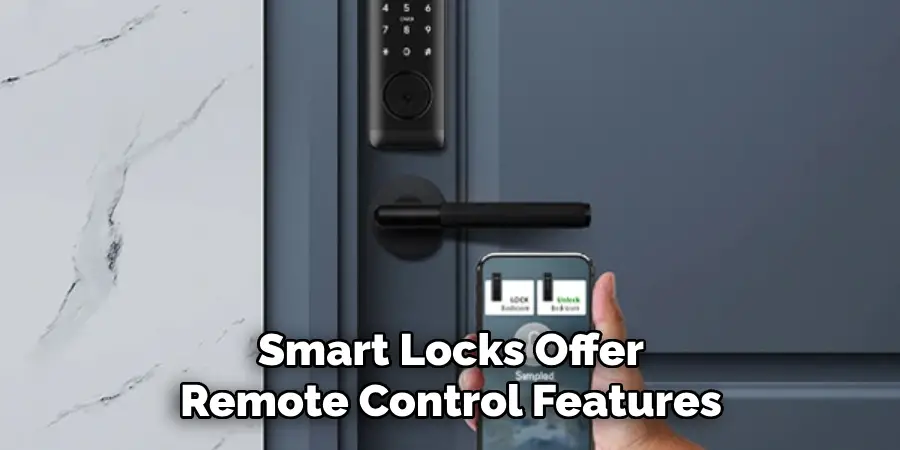
Components and Mechanisms of a Typical Lock
Understanding the internal mechanisms and components of a typical lock is essential for effective diagnosis and repair of any issues. At the heart of most locks, you’ll find a series of intricate parts that work together to secure a door. Here are the key components:
- Lock Cylinder: This is the core of the lock where the key is inserted. The cylinder houses the pins, springs, and the plug. When the correct key is inserted, it aligns with the pins, allowing the plug to rotate and operate the lock.
- Pins: Inside the cylinder, there are a series of pins of varying lengths, split into two categories: key pins and driver pins. The alignment of these pins with the key notches is what allows or denies the turning of the key.
- Springs: Above the pins in the cylinder, springs apply pressure, pushing the pins back into the plug after the key is removed. This ensures the lock reverts to its locked state automatically.
- Bolt or Latch: The bolt or latch is the part of the lock that extends into the door frame to secure the door in place. Deadbolts provide a higher level of security by requiring a key to retract the bolt.
- Actuator: The actuator connects the lock cylinder to the bolt assembly. When the plug of the cylinder rotates, the actuator translates this rotational movement into the lateral movement of the bolt.
- Cam: Attached to the end of the plug, the cam is a piece of metal that turns with the plug. The cam actuates the bolt or latch once the plug is rotated by the correct key.
- Mechanical Linkages: These are the components that connect different parts of the lock mechanism, allowing them to function together as a cohesive unit.
The Specific Lock Type and Its Features: Smart Locks
Among the various types of locks described, Smart Locks represent a cutting-edge solution in home and office security. These locks integrate advanced technology with traditional lock mechanisms to offer enhanced security features and convenience. Here are some of the defining features of smart locks:
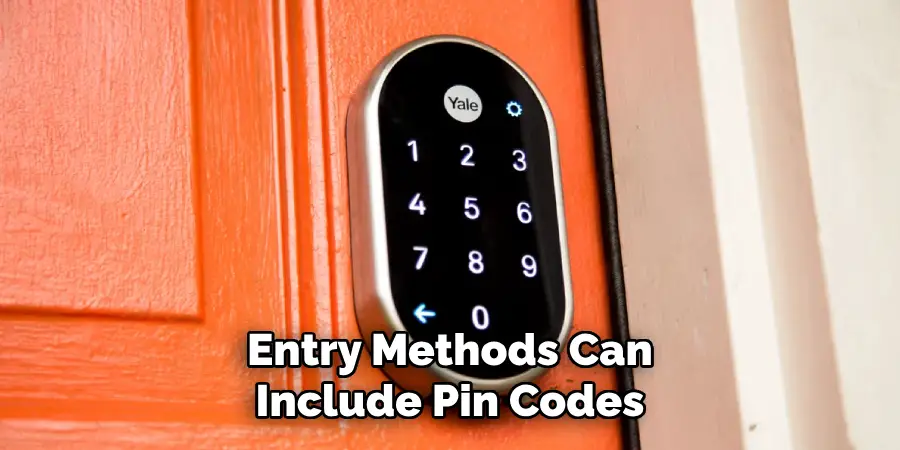
- Remote Access: One of the hallmark features of smart locks is the ability to lock and unlock doors remotely using a smartphone app. This means you can control access to your property from anywhere, providing peace of mind when you’re away.
- Keyless Entry: Smart locks often eliminate the need for physical keys. Entry methods can include pin codes, fingerprint recognition, or proximity-based unlocking via a smartphone or smartwatch. This reduces the risk of lost keys and unauthorized access through key duplication.
- Access Control and Logs: Smart locks allow you to create temporary access codes for guests or service providers. This feature is especially useful for rental properties or homes that receive frequent visitors. Furthermore, most smart locks keep an access log, allowing you to see who enters and leaves your property and when.
- Integration with Smart Home Systems: Many smart locks can be integrated with wider smart home systems, enabling you to automate your home’s security. For example, you can program your lock to automatically engage at a certain time in the evening or when your smart home system detects that you’re leaving the house.
- Enhanced Security Features: Beyond the basic locking mechanism, smart locks often come with built-in alarms for attempted forced entries or tampering. Additionally, encryption and secure communication protocols protect against digital hacking attempts.
- Battery Operation and Power Failure Safeguards: Smart locks are typically battery-operated, ensuring that they remain functional even during power outages. Most models will notify you when batteries are running low. Further, in case of battery failure, many smart locks offer a physical key option or an external battery connection to prevent lockouts.
- Elegant Design and Customizability: Beyond their technological advantages, smart locks are also designed with aesthetics in mind. Available in various finishes and styles, they can complement the design of your entrance, adding a touch of modernity. Customizable features like volume control for keypad presses and door open/close alerts add further convenience.
Identifying the Symptoms of a Broken Lock
Determining whether a lock is malfunctioning or completely broken is crucial to addressing security concerns promptly. Here are common symptoms that suggest a lock might be failing or already broken:
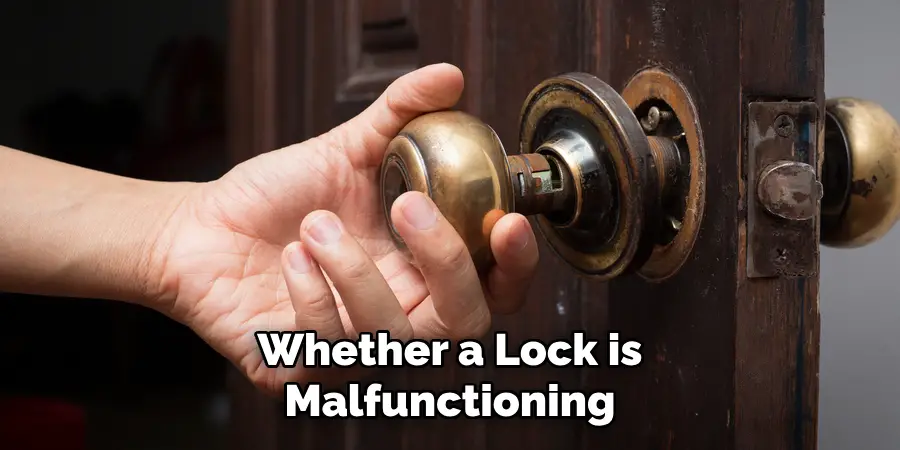
- Difficulty Turning the Key: One of the most noticeable signs is when the key becomes tough to turn or won’t turn at all. This could indicate alignment issues with the pins or damage inside the lock cylinder.
- Key Gets Stuck or Breaks Inside the Cylinder: If a key gets stuck frequently or has broken inside the lock, this points to possible internal failures or obstructions within the lock mechanism.
- Loose Lock Components: Should any part of the lock mechanism, including the cylinder or handle, feel loose or wobbly, it’s a clear indicator that the lock integrity is compromised.
- Failure to Latch or Lock: When the door doesn’t latch or lock correctly, it could be due to misalignment between the door and frame or a malfunction within the bolt or latch mechanism.
- Visible Damage: Any visible signs of damage, such as dents or breakage on the lock or surrounding area, could impair the lock’s functionality. This is especially relevant for smart locks where external damage can affect internal electronics.
- Unresponsive Electronic Components: For smart locks, unresponsiveness to keypad entries, app commands, or failure of the biometric scanner indicates internal electronic issues or battery failure.
- Strange Noises: Grinding or clicking noises during operation are abnormal and suggest that internal components are not engaging correctly, possibly due to wear or damage.
- Tamper Alerts: For smart locks, receiving unexpected tamper alerts can signify attempted unauthorized entry or manipulation of the lock mechanism.
Identifying these symptoms early on can help in seeking timely repair or replacement, thus maintaining the security of your property.
10 Methods How to Fix a Broken Lock
1. Inspect the Lock Mechanism:
Begin by carefully examining the lock to identify the nature and extent of the problem. Look for visible signs of damage, such as bent or broken components, loose screws, or debris obstructing the mechanism. Understanding the underlying cause of the lock malfunction will guide your troubleshooting efforts and help determine the appropriate course of action.
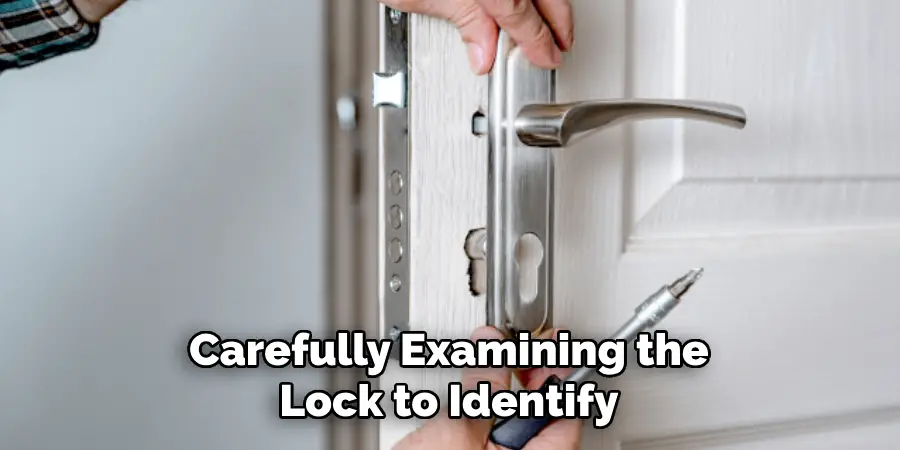
2. Check for Key Issues:
If the lock is not functioning properly with the key, inspect the key for signs of damage or wear. A bent or worn key can prevent the lock from turning smoothly or engaging properly. Try using a spare key to see if the issue persists. If the spare key works smoothly, the problem likely lies with the original key, which may need to be repaired or replaced.
3. Lubricate the Lock:
Lack of proper lubrication can cause locks to become stiff or difficult to operate. Apply a small amount of graphite powder or silicone-based lubricant to the keyhole and internal components of the lock mechanism. Use a narrow applicator, such as a straw or precision nozzle, to ensure precise application without oversaturating the lock. Work the key in and out of the lock several times to distribute the lubricant evenly and improve the lock’s functionality.
4. Adjust the Strike Plate:
If the lock is having trouble latching or engaging properly, the strike plate may be misaligned. Use a screwdriver to loosen the screws securing the strike plate to the door frame. Gently adjust the position of the strike plate to ensure that it aligns properly with the latch or bolt. Tighten the screws securely once the strike plate is properly aligned to improve the lock’s performance.
5. Tighten Loose Screws:
Over time, the screws holding the lock in place may become loose, causing the lock to wobble or malfunction. Use a screwdriver to tighten any loose screws on the lock mechanism, strike plate, or door hardware. Check both the interior and exterior components of the lock assembly, including the doorknob, deadbolt, and latch mechanism, to ensure all screws are securely fastened.
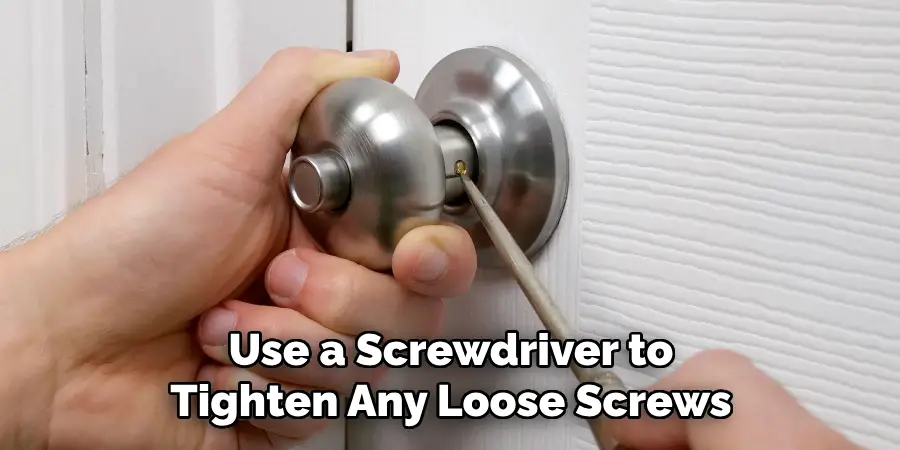
6. Replace Worn or Broken Parts:
If the lock is severely damaged or certain components are beyond repair, consider replacing them with new parts. Commonly replaced components include springs, pins, tumblers, and latch mechanisms. Purchase replacement parts compatible with your lock’s make and model, and follow manufacturer guidelines or consult a locksmith for assistance with installation.
7. Use a Lock Repair Kit:
Lock repair kits are available commercially and contain various tools and components for repairing common lock issues. These kits typically include replacement pins, springs, and other small parts, as well as specialized tools for disassembling and reassembling locks. Follow the instructions provided with the repair kit to troubleshoot and fix specific lock problems effectively.
8. Rekey the Lock:
Rekeying involves changing the internal components of the lock cylinder to match a new key. This method is useful if you’ve lost your keys or want to enhance security by invalidating existing keys. Consult a professional locksmith to rekey the lock, as it requires specialized tools and expertise to disassemble and reassemble the lock cylinder properly.
9. Install a Temporary Lock:
If the broken lock cannot be repaired immediately, consider installing a temporary locking mechanism to secure the door temporarily. Options include padlocks, deadbolts, or latch guards that can be mounted on the interior or exterior of the door to provide temporary security until the permanent lock is fixed or replaced.
10. Seek Professional Assistance:
If you’re unable to resolve the lock issue on your own or if the lock is extensively damaged, it’s best to enlist the help of a professional locksmith. Locksmiths have the knowledge, skills, and specialized tools required to diagnose and repair a wide range of lock problems efficiently. Additionally, locksmiths can provide expert advice on upgrading your locks or enhancing overall security measures for your property.
Conclusion
By following these ten comprehensive methods for fixing a broken lock, you can address common issues and restore the security of your property. Whether lubricating the lock mechanism, tightening loose screws, or replacing worn parts, each method offers a solution to common lock problems.
If you encounter difficulties or the issue persists, don’t hesitate to seek professional assistance from a locksmith or door repair technician. With the right tools and knowledge, you can effectively fix a broken lock and safeguard your property against unauthorized access. Thanks for reading our blog post on how to fix a broken lock! We hope you found it helpful and informative.

